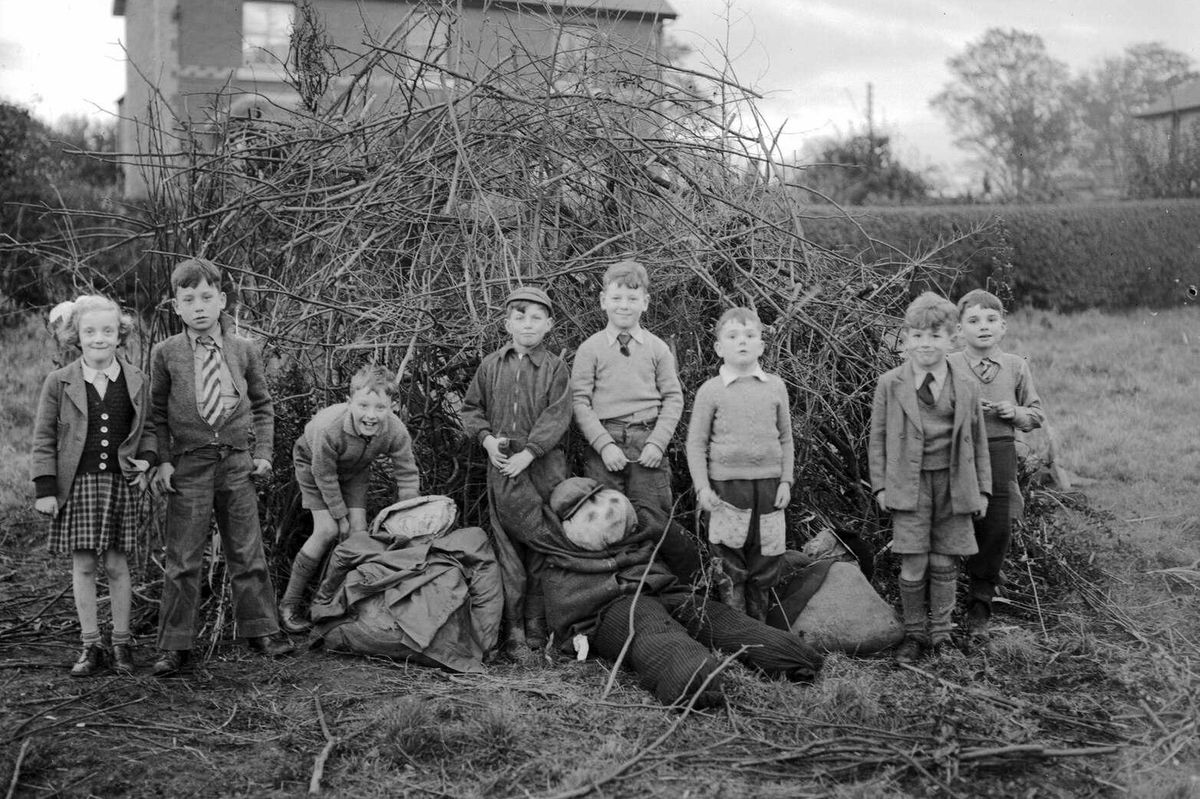The reason we say 'you guys' for everyone started with a foiled murder plot in 1605
The famously generic term used to be a very specific insult.
Guy Fawkes was caught trying to blow up the Houses of Parliament and murder the King of England.
Gen Xers may remember the opening credits of "The Electric Company" when a woman's voice yells, "Heyyyy, youuuu guyyyyys!" Americans have been using the phrase "you guys" to refer to a generic group of people for many generations, but most of us probably don't think about why or where that term came from.
It's kind of a weird word, when you think about it. We use "guy" the singular to refer to a man, but "guys" plural could refer to any group of people, regardless of gender. Why? How did we get here? And where did the word "guy" come from in the first place? It would be pretty funny if it actually came from a guy named Guy, wouldn't it?

As a matter of fact, it did. It all started in 1605, when a group of Catholic conspirators plotted to blow up the English Houses of Parliament and kill King James I, along with the queen and their son. Ultimately, the plan (known as the Gunpowder Plot of 1605) failed when an anonymous letter led authorities to the cellars underneath the Houses of Parliament, where one of the conspirators, Guy Fawkes, was found with a lantern, a fuse, a box of matches, and 36 barrels of gunpowder.
Fawkes was arrested and taken before the king, where he was boldly unapologetic about his intentions. "I wish to blow the Scottish King and all of his Scottish Lords back to Scotland," he said, expressing regret that he had failed to do so. Imprisoned in the Tower of London, Fawkes was tortured until he gave up the names of his co-conspirators. Four of them were shot and killed upon capture. The other three were dragged behind a horse before being hanged, drawn, and quartered for the crime of treason.

First to be arrested and last to be executed, Fawkes became the symbol of the failed assassination attempt. An annual observance, known as Guy Fawkes Day, was established as a celebration of that failure. Historically, children would carry effigies of Guy Fawkes, crude scarecrow-like figures representing him, and adults would offer them "a penny for the guy" to throw into a bonfire.
The image of crude, burned "guys" eventually led to "guys" being used for real people, referencing any "grotesquely or poorly dressed person." In the early 19th century, "guy" was a pretty solid insult. Word Smarts shares that in 1836, a letter from author Julia Charlotte Maitland about a trip to India reads: “The gentlemen are all ‘rigged Tropical,’ with their collars turned down, and small matters of neckcloths; – grisly Guys some of them turn out!”

Gradually, the word became less negative and less gendered. By the mid-20th century, both men and women were using "you guys" to refer neutrally to people of all genders. That doesn't change the fact that it was traditionally a masculine term, of course, and some prefer fully gender-neutral terms like "folks" or "you all" instead of "you guys." However, the meaning and usage of words often change over time, and language is always evolving. Whether "guys" is an inherently gendered term or not, it is indisputably used in a gender-neutral way in common usage.
And hey, at least it's not used to call people ugly or treacherous anymore. Isn't language fun?
